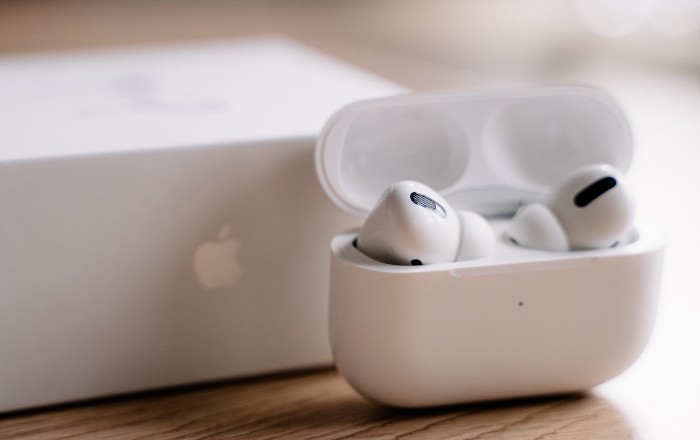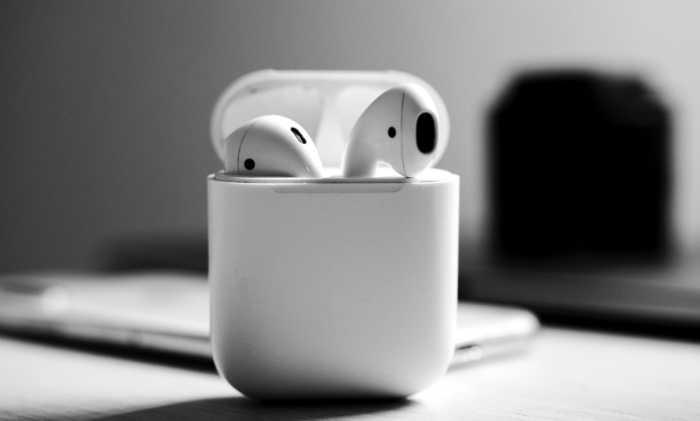Apple’s AirPods: A Look Into Their Massive Success

Apple has long been synonymous with innovation, shaping industries and consumer behaviors with products like the iPhone, iPad, and Apple Watch. Among its line-up of groundbreaking creations, the AirPods stand out as a testament to the company’s unparalleled ability to transform everyday utilities into cultural phenomena.
Since their launch, these wireless earbuds have not only redefined our relationship with audio technology but have also secured a position as one of Apple’s most successful and iconic products. This journey from introduction to industry dominance is a fascinating tale of design, technology, and market intuition.
A Dive Into the Beginning
The year 2016 brought forth an era of wireless freedom for Apple users. As the company known for revolutionizing how we perceive and utilize technology took another bold leap, the world was introduced to a product that would challenge conventions yet again: the AirPods.
Unveiling the Unexpected
In September 2016, during one of its much-anticipated product launch events, Apple showcased the AirPods to the world. These were not merely earphones but a wireless experience.
At first glance, they appeared like the traditional Apple EarPods, but with the cords conspicuously absent. This marked Apple’s venture into truly wireless audio, a risky move, considering the dependability consumers had on wired headphones.
Initial Public Reaction
The debut was met with a mix of excitement, skepticism, and humor. The internet buzzed with memes about how easy it would be to lose one, and critics questioned the product’s practicality and design.
Some mocked their toothbrush-like appearance, while others expressed concerns over their fit and the potential for them to easily fall out during use.
Defying Traditional Audio Norms
But beyond the jests and criticisms, the introduction of the AirPods signified Apple’s commitment to a wireless future. This was further emphasized when they made the controversial decision to remove the headphone jack from the iPhone 7.
For Apple, this wasn’t just about a new product; it was a statement. The future they envisioned was clutter-free, uncomplicated, and devoid of tangled cords.
Building Anticipation
Despite the initial hesitation, Apple’s prowess in creating buzz and anticipation was evident. As release dates neared, consumers grew curious.
Would the audio quality hold up? How would the experience differ from traditional wired earphones? These questions, among others, set the stage for what would become one of the most successful product launches in Apple’s history.
Design and User Experience
Apple’s commitment to innovation is not just about introducing new technology; it’s equally about the design ethos and the seamless user experience. The AirPods, from their form to their functionality, are an embodiment of this commitment.
They combine minimalistic design with an intuitive user interface, creating an experience that is both enjoyable and effortless.
Simplicity at Its Best
Taking a first look at the AirPods, one is immediately struck by their clean, uncluttered design. Devoid of buttons, wires, or any extraneous elements, the AirPods present a sleek and modern aesthetic.
This minimalism isn’t merely for aesthetics—it serves a functional purpose. Without buttons, the interactions are touch and motion-based, offering users a more intuitive way to control their listening experience.
Intuitive Interactions
The AirPods come alive the moment they are taken out of their case. They pair instantly with the user’s device, eliminating the often cumbersome process of manual Bluetooth pairing.
Further enhancing the user experience, the AirPods can detect when they’re in one’s ears, playing audio automatically when inserted and pausing when removed. Such attention to detail ensures that the user is always in control, even when the controls themselves are invisible.
Focused on Convenience
Beyond the immediate interaction, Apple ensured that the AirPods’ user experience extended to aspects like battery life and portability. The compact carrying case doesn’t just protect the earbuds; it also charges them, ensuring that users can listen on the go without much interruption.
A mere 15 minutes in the case can provide hours of listening time, reducing the instances where users are left without their music or calls due to a dead battery.
An Extension of the Ecosystem
AirPods are not standalone. They’re a part of Apple’s broader ecosystem, which means they’re optimized for use with other Apple products.
Features like “Hey Siri” voice activation and effortless switching between devices—be it an iPhone, iPad, Mac, or Apple Watch—underscore the seamless integration that Apple users have come to appreciate and expect.
Seamless Ecosystem Integration

In the world of technology, products seldom operate in isolation. Apple, with its suite of interconnected devices and software, exemplifies this notion.
The AirPods, while an impressive product in their own right, truly shine when viewed within the larger Apple ecosystem. This integration offers a cohesive experience that blurs the lines between individual devices, making the whole greater than the sum of its parts.
Synchronized Across Devices
One of the standout features of the AirPods is their immediate synchronization with all Apple devices associated with a user’s iCloud account. Whether you’re switching from your iPhone to your Mac or transitioning from your iPad to your Apple Watch, the AirPods effortlessly follow your lead.
This ensures that your listening experience remains uninterrupted, regardless of the device you’re using.
Activate, Inquire, and Command With Siri
Voice assistants have revolutionized how we interact with our gadgets. With the AirPods, invoking Siri is just a tap or a “Hey Siri” away.
Whether it’s to change songs, adjust volume, make calls, or get directions, Siri integration means you can keep your phone in your pocket and remain hands-free.
Immersive Sound Across Platforms
Apple’s dedication to quality sound isn’t confined to music. With AirPods, this translates to enhanced experiences across the board.
Watching a movie on your iPad or attending a video conference on your Mac? The AirPods guarantee consistent audio quality, ensuring that dialogue, music, and ambient sounds come through with clarity.
Finding the Lost Beats
It’s a scenario many dread—misplacing an AirPod. But even here, the integration with Apple’s ecosystem comes to the rescue.
The ‘Find My’ app, a staple for locating missing iPhones and Macs, works seamlessly with the AirPods. You can play a sound to locate a misplaced earbud or even see its last known location on a map.
Unified Settings and Customizations
Preferences, customizations, and settings made on one device are reflected across others. For instance, if you customize the double-tap function of your AirPods on your iPhone, the same customization will be available when you connect them to your iPad or Mac.
Sound Quality and Tech Innovations
The allure of any audio device, regardless of its design or features, ultimately boils down to one fundamental aspect: sound quality. With the AirPods, Apple didn’t just present a wireless solution; they crafted an auditory experience.
Complementing this emphasis on sound, the company integrated pioneering tech innovations that pushed the boundaries of what users expect from wireless earbuds.
A Balance of Form and Function
Compactness often comes at the cost of compromised audio. But with AirPods, Apple showcased its ability to maintain robust sound quality in a form that’s both sleek and functional. The bass is rich without being overpowering, and the mids and highs are crisply articulated. This balance ensures that whether it’s a podcast, classical symphony, or the latest pop hit, the listening experience remains immersive.
Noise Cancellation and AirPods Pro
When Apple introduced the AirPods Pro, they brought with them a feature often reserved for larger over-ear headphones: Active Noise Cancellation (ANC). Using advanced algorithms and outward-facing microphones, the AirPods Pro can counteract external noise, providing users with a focused listening environment even in bustling settings.
Adaptive EQ and Personalized Sound
Not all ears are the same, and Apple recognizes this. The AirPods Pro boasts an Adaptive EQ feature, which automatically tunes the low and mid-frequencies to the shape of an individual’s ear.
This results in a more tailored and personal listening experience, ensuring that music and voice always sound their best.
The Magic of Spatial Audio
Spatial audio, especially with dynamic head tracking, is one of the latest additions to the AirPods’ repertoire of features. It offers a theater-like experience for audio.
This feature uses gyroscopes and accelerometers to track head movement, adjusting the audio accordingly. The result is a surround sound experience that makes users feel like they’re in the center of the action, be it a movie scene or a live concert.
Battery Innovations for Extended Play
Technological innovations aren’t just about features; they also address usability. Recognizing the importance of battery life in wireless devices, Apple engineered the AirPods to optimize power consumption.
Quick charging, extended playtimes, and the convenience of charging right within the case ensure that users are rarely left without their beloved tunes.
Marketing Mastery

When Apple releases a new product, the world pays attention. But it’s not just the innovation and design that capture global interest—it’s the marketing magic behind each launch.
With the AirPods, Apple employed a combination of branding brilliance, strategic product placement, and user engagement, ensuring that the earbuds were not just a product but a cultural phenomenon.
Branding That Resonates
Apple’s brand has always been about more than just technology. It’s about a lifestyle, an aesthetic, and a set of values. The marketing for AirPods tapped into this ethos.
From minimalist visuals to evocative music choices, Apple’s campaigns positioned AirPods as both a tool for everyday life and a symbol of modern sophistication.
Pop Culture and Virality
While Apple’s official campaigns were effective, the AirPods received an unexpected boost from internet culture. Memes, jokes, and online discussions transformed the product from mere earbuds to a status symbol.
Rather than resisting this organic, user-generated content, Apple embraced it, allowing the narrative to grow and resonate with younger audiences.
Celebrity Endorsement and Visibility
Apple has always understood the power of celebrity influence. By ensuring that prominent figures in music, sports, and entertainment were spotted with AirPods, they created an aspirational image for the product.
This wasn’t just about showing that celebrities used AirPods, but about integrating the product into the world of luxury and elite lifestyle.
Telling a Story
Every Apple product comes with a story, and AirPods were no different. The commercials and promotional videos didn’t just highlight the product’s features.
They told tales of everyday life, of dance, of movement, and of freedom. This narrative-based marketing helped consumers visualize and relate to the AirPods experience.
User Engagement and Feedback Loop
While many companies push their products through aggressive marketing, Apple has cultivated a loyal base that eagerly anticipates each release. With AirPods, Apple not only engaged with its audience through traditional channels but also took note of user feedback, continuously refining and enhancing the product to meet consumer demands.
The Expansion of the AirPods Line
Success in the tech world often lays the groundwork for diversification, and Apple’s AirPods are a prime example. Following the triumph of the original AirPods, Apple discerned the potential for growth, leading to an expanded line catering to varied user preferences and needs.
AirPods Pro – A Step Above
With the unveiling of the AirPods Pro, Apple signaled its intent to cater to the more discerning audio enthusiast. These earbuds brought enhanced sound quality, the much-acclaimed Active Noise Cancellation, and a refined in-ear design, providing a snugger fit.
This version was not just about an upgrade but about offering a premium listening experience.
AirPods Max – Redefining Over-Ear Headphones
Branching out from their iconic earbud design, Apple introduced the AirPods Max, their interpretation of over-ear headphones. Marrying comfort with high-fidelity sound, these headphones catered to those seeking immersive audio without compromising on style.
Features like spatial audio and a digital crown for control added to their distinctiveness in the crowded over-ear market.
Customizable Experience With AirPods
Recognizing that one size doesn’t fit all, Apple provided users with options to personalize their AirPods experience. With the introduction of replaceable ear tips for the AirPods Pro, listeners could find their perfect fit, ensuring comfort and optimal sound quality.
This move towards customization underscored Apple’s commitment to individual user comfort and experience.
Seamless Transition With the Apple H1 Chip
At the heart of the AirPods’ success is the tech that powers them. The introduction of the Apple-designed H1 chip was more than just a technical upgrade; it was about enhancing user experience.
This chip facilitated faster connection times, increased talk time, and the hands-free “Hey Siri” feature. As the AirPods line expanded, this chip ensured that the user experience remained consistent and top-notch across the board.
Competition and Market Dominance

In the fiercely competitive landscape of wireless audio, AirPods emerged not just as another product, but as a benchmark for competitors. While Apple’s earbuds quickly soared to the top of the market, they were not without rivals.
Understanding how AirPods established their market dominance requires a look into the competition and the shifting dynamics of the audio tech world.
The Rise of True Wireless Earbuds
The launch of AirPods coincided with a growing trend in the audio space: the adoption of true wireless earbuds. Brands like Samsung with their Galaxy Buds, Google with Pixel Buds, and others began to introduce their takes on wireless audio solutions.
The stage was set for a showdown, with consumers eager for cord-free listening.
Distinctive Design as a Competitive Edge
Amidst the sea of true wireless offerings, AirPods’ distinctive design made them immediately recognizable. This design, initially met with skepticism due to its stem-like protrusion, soon became iconic.
Where many competitors opted for more discreet designs, AirPods stood out, making them both a product and a statement piece.
Intuitive User Experience Sets the Bar
While design caught the eye, the user experience captured hearts. AirPods’ instant pairing, touch controls, and seamless transition between devices set a standard that competitors had to match.
This blend of aesthetics and functionality gave Apple a significant edge in the market.
Competitive Pricing and Brand Power
Despite their premium positioning and the common perception that Apple products are expensive, AirPods were competitively priced when compared to offerings from other tech giants and high-end audio brands. Coupled with Apple’s brand power and loyal customer base, this ensured that AirPods remained a top choice for consumers, balancing cost with perceived value.
Challenges From Niche Audio Brands
While tech giants posed a direct challenge, niche audio brands like Sony, Bose, and Sennheiser also entered the fray with their expertise in sound engineering. Products like Sony’s WF-1000XM series gained attention for their superior sound quality and noise cancellation features.
These brands catered to audiophiles, presenting a different kind of competition for Apple.
Adapting to Market Feedback
One of Apple’s strengths lies in its ability to iterate based on market feedback. When faced with competition touting superior sound quality or better noise cancellation, Apple responded with the AirPods Pro, ensuring that they remained at the forefront of both innovation and market demand.
Conclusion
Apple’s AirPods, beyond being mere earbuds, have transformed into a cultural phenomenon. Their rise to dominance is a testament to the company’s prowess in design, innovation, marketing, and understanding consumer desires.
While competitors abound in the ever-evolving world of wireless audio, the AirPods story is a masterclass in how a product, backed by the right strategies and consumer-centric design, can not only capture market share but also hearts worldwide.


